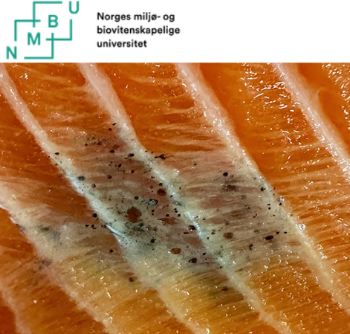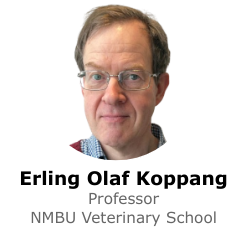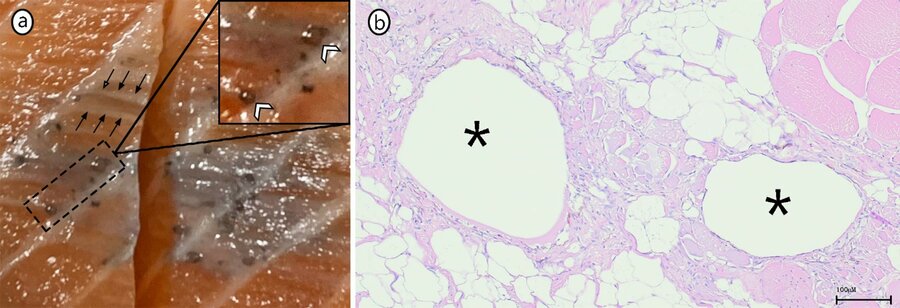|

A typical black melanin spot in the fillet Photo: Håvard Bjørgen
Research Aims to Reduce Black Spots in Salmon Fillets Through Feed and Exercise Strategies
 NORWAY
NORWAY
Monday, February 10, 2025, 00:10 (GMT + 9)
Research at NMBU Veterinary School has identified dead fat cells (fat necrosis) as the cause of black spots in salmon fillets, an issue impacting product quality.
 Journal of Fish Diseases, 00, e13988 Photo Håvard Bjørgen.jpg)
Proposed developmental steps in the formation of melanin spots. Illustration: Bjørgen et al. (2024) Journal of Fish Diseases, 00, e13988. Photo : Håvard Bjørgen. Click on the image to enlarge it.
Building on 20 years of research into melanin spots in salmon, the team is now launching a new project, "FatSpot," to determine the causes of this fat necrosis and develop preventative measures.
 "We aim to reduce the occurrence of these spots, a production disease likely influenced by multiple factors, including infections, suboptimal production systems, nutrition, and stress," explains Associate Professor Håvard Bjørgen, project lead. Professor Erling Olaf Koppang adds that the research will focus on how various factors affect the fish's fat composition. "We aim to reduce the occurrence of these spots, a production disease likely influenced by multiple factors, including infections, suboptimal production systems, nutrition, and stress," explains Associate Professor Håvard Bjørgen, project lead. Professor Erling Olaf Koppang adds that the research will focus on how various factors affect the fish's fat composition.
Recognizing nutrition's potential role, the researchers will collaborate with feed manufacturers MOWI Feed and Skretting to investigate the impact of different feed compositions and fat sources. "Nutrition is likely a primary driver of black spot development," says Koppang. Bjørgen notes that experimental feed trials, combined with analysis of feed composition in relation to disease, injuries, and handling, will inform targeted feed strategies during specific production phases.
 In partnership with salmon producer Bremnes Seashore, the project will also explore the effect of exercise on fat metabolism. "Studies on humans and mice suggest early-life exercise has long-term benefits," explains Bjørgen. "We'll investigate if exercising hatchery fish in tanks with electrical stimulation impacts black spot development." In partnership with salmon producer Bremnes Seashore, the project will also explore the effect of exercise on fat metabolism. "Studies on humans and mice suggest early-life exercise has long-term benefits," explains Bjørgen. "We'll investigate if exercising hatchery fish in tanks with electrical stimulation impacts black spot development."
Funded by the Norwegian Fisheries and Aquaculture Industry's research funding (FHF), the project represents the culmination of long-term basic research on salmon immune cells and melanin production, continuously supported by FHF and the Research Council of Norway since 2005. Koppang emphasizes the importance of this sustained basic research in enabling the current applied research collaboration with the industry.

a) A melanin spot with fatty cysts. b) Microscopic image of cyst formations (stars) in the fatty tissue. Photo: Bjørgen et al. (2024) Journal of Fish Diseases, 00, e13988. Photo : Håvard Bjørgen. Click on the image to enlarge it.
The FatSpot project, exploring the connection between feed, injuries, training, and adipose tissue changes in red and black spots in salmon, involves a collaboration between NMBU Veterinary School, MOWI, MOWI Feed, Skretting, Bremnes Seashore, and Ellingsen Seafood.
The project is funded by FHF - the Norwegian Fisheries and Aquaculture Industry's Research Fund.
The project runs from 2025 to 2028.
Norwegian University of Life Sciences (NMBU) | Press release
[email protected]
www.seafood.media
|



